Midface Volume Restoration In Walton-on-Thames, Surrey
Midface Volume Loss
As we age, facial structures naturally change, and one common concern is the loss of volume in the midface region. This can lead to a flatter appearance, with sunken cheeks and pronounced lines around the nose and mouth.
Let me know if you’d like me to continue writing about this topic!
Causes of Midface Volume Loss
As we age, facial structures naturally change, and one common concern is the loss of volume in the midface region. This can lead to a flatter appearance, with sunken cheeks and pronounced lines around the nose and mouth.
Several factors contribute to midface volume loss:
- Gravity
- Fat Redistribution
- Bone Loss
- Decreased Collagen Production
Signs and Symptoms of Midface Volume Loss
Several factors contribute to midface volume loss: Gravity, fat redistribution, bone loss, and decreased collagen production all play a role.
Recognizing the signs of midface volume loss is essential for addressing it effectively. Common symptoms include:
- Hollowed cheeks
- Nasolabial folds (lines from the nose to the corners of the mouth) that appear deeper or more pronounced
- A flattened cheekbone area
- A noticeable change in facial symmetry
- A tired or aged appearance
Treatment Options for Midface Volume Restoration
Fortunately, advancements in aesthetic medicine offer a range of effective treatment options to restore volume and rejuvenate the midface.
Dermal Fillers
Dermal fillers are a popular and versatile treatment for restoring volume loss in the midface.
These injectables are made from hyaluronic acid, a naturally occurring substance in the body that helps to hydrate and plump up the skin.
A skilled practitioner can strategically inject dermal fillers into specific areas of the midface to enhance cheekbones, smooth nasolabial folds, and create a more youthful contour.
Types of Dermal Fillers Used for Midface Augmentation
Hyaluronic acid fillers are the most common type used for midface augmentation.
Popular brands include Restylane, Juvederm, and Belotero. Each filler has different properties, such as viscosity and longevity, allowing practitioners to tailor their choice to individual patient needs and desired outcomes.
Other types of fillers, such as calcium hydroxylapatite, can also be used for midface volumization.
Procedure for Dermal Filler Injection
The procedure for dermal filler injection is relatively straightforward. It typically begins with a consultation to discuss your goals and medical history. The practitioner will then cleanse the treatment area and may use topical anesthetic to minimize discomfort.
Using a fine needle or cannula, the dermal filler is injected into specific points in the midface. The practitioner will carefully manipulate the filler to achieve the desired results, such as lifting the cheeks, smoothing nasolabial folds, or enhancing the jawline.
The entire procedure usually takes about 30 minutes to an hour, depending on the extent of treatment required.
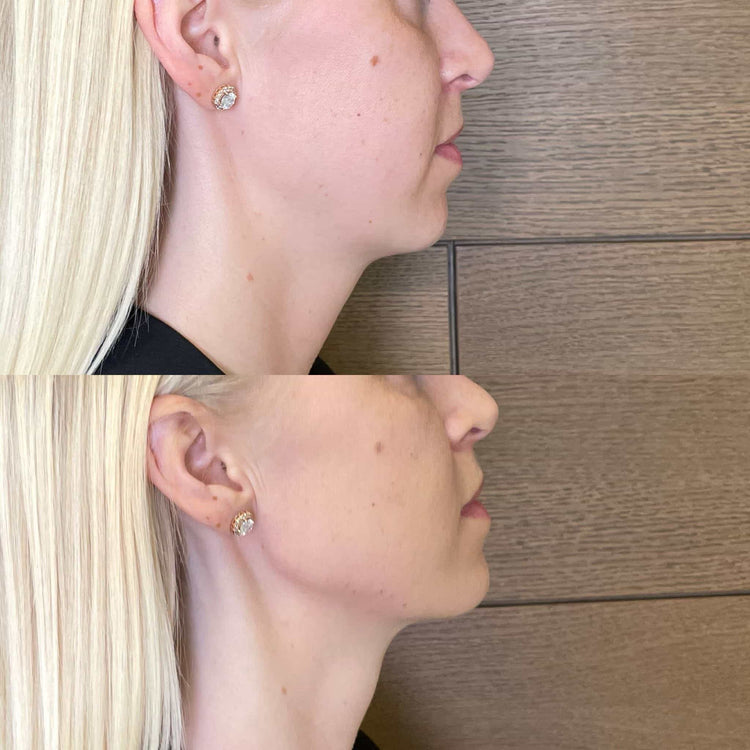
After the injection, you may experience some mild swelling, bruising, or redness, which typically subside within a few days.
Benefits and Risks of Dermal Fillers
Dermal fillers offer numerous benefits for midface volume restoration. They provide immediate results, requiring no downtime for recovery. The procedure is relatively quick and minimally invasive, making it a convenient option for many patients. Furthermore, hyaluronic acid fillers are biodegradable and gradually absorbed by the body, allowing for natural-looking, long-lasting results that typically last 6 to 18 months.
Like any medical procedure, dermal fillers carry certain risks and potential side effects. These can include infection, bruising, swelling, redness, and asymmetry. It’s essential to choose a qualified and experienced practitioner who understands the nuances of facial anatomy and filler placement to minimize these risks. In rare cases, more serious complications such as vascular occlusion (blockage of a blood vessel) can occur. Discussing your medical history, any allergies you have, and medications you are taking with your practitioner before the procedure is crucial to ensure safe and effective treatment.
Fat Grafting
Fat grafting, also known as autologous fat transfer, is another effective option for midface volume restoration. This technique involves harvesting fat from a donor site, typically the abdomen, thighs, or buttocks, and then injecting it into the desired areas of the midface to restore fullness.
The advantage of fat grafting is that it utilizes the patient’s own tissue, minimizing the risk of allergic reactions or rejection. Additionally, fat can stimulate collagen production in the treated area, potentially leading to long-lasting improvements in skin quality and volume.
The fat grafting procedure typically involves two stages. First, a small amount of fat is removed from the donor site using liposuction techniques. This fat is then processed and purified to remove any unwanted cells or debris. Second, the purified fat is carefully injected into the midface using specialized cannulas.
A skilled surgeon will precisely place the fat to create a natural-looking enhancement of cheekbones, reduce nasolabial folds, and restore youthful contours.
Recovery from fat grafting generally involves some swelling, bruising, and tenderness around both the donor site and the injection areas. Most patients can resume normal activities within a few days, although it may take several weeks for the final results to become apparent as the transplanted fat settles into its new location.
Like any surgical procedure, fat grafting carries potential risks and complications, which should be thoroughly discussed with your surgeon before undergoing the treatment. These can include infection, asymmetry, contour irregularities, and the need for additional procedures to refine the results.
Procedure for Fat Grafting
Several factors contribute to midface volume loss: Gravity, fat redistribution, bone loss, and decreased collagen production all play a role.
Recognizing the signs of midface volume loss is essential for addressing it effectively. Common symptoms include:
- Hollowed cheeks
- Nasolabial folds (lines from the nose to the corners of the mouth) that appear deeper or more pronounced
- A flattened cheekbone area
- A noticeable change in facial symmetry
- A tired or aged appearance
Fortunately, advancements in aesthetic medicine offer a range of effective treatment options to restore volume and rejuvenate the midface.
Fat grafting is another option for midface volume restoration. This technique involves harvesting fat from a donor site, typically the abdomen, thighs, or buttocks, and then injecting it into the desired areas of the midface to restore fullness.
The advantage of fat grafting is that it utilizes the patient’s own tissue, minimizing the risk of allergic reactions or rejection. Additionally, fat can stimulate collagen production in the treated area, potentially leading to long-lasting improvements in skin quality and volume.
The fat grafting procedure typically involves two stages. First, a small amount of fat is removed from the donor site using liposuction techniques. This fat is then processed and purified to remove any unwanted cells or debris. Second, the purified fat is carefully injected into the midface using specialized cannulas.
A skilled surgeon will precisely place the fat to create a natural-looking enhancement of cheekbones, reduce nasolabial folds, and restore youthful contours.
Recovery from fat grafting generally involves some swelling, bruising, and tenderness around both the donor site and the injection areas. Most patients can resume normal activities within a few days, although it may take several weeks for the final results to become apparent as the transplanted fat settles into its new location.
Like any surgical procedure, fat grafting carries potential risks and complications, which should be thoroughly discussed with your surgeon before undergoing the treatment. These can include infection, asymmetry, contour irregularities, and the need for additional procedures to refine the results.
Benefits and Risks of Fat Grafting
Fat grafting offers several benefits for midface volume restoration. As it utilizes the patient’s own fat, it minimizes the risk of allergic reactions or rejection, a concern that can arise with synthetic fillers. Furthermore, injected fat can stimulate collagen production, potentially leading to long-lasting improvements in skin quality and volume beyond just immediate fullness.
However, fat grafting also comes with potential risks and considerations:
- Fat Absorption: Not all transplanted fat survives. The body may reabsorb some of the injected fat over time, meaning multiple procedures might be needed to achieve desired results.
- Contour Irregularities: Uneven fat distribution can lead to noticeable lumps or dimples. Careful placement by a skilled surgeon is crucial to minimize this risk.
- Infection and Swelling: Like any surgical procedure, there’s a risk of infection at the donor site and/or injection sites. Swelling is also common after the procedure and can take several weeks to subside completely.
- General Anesthesia: Fat grafting often requires general anesthesia, which carries inherent risks associated with any anesthetic procedure.
Thread Lifting
Thread lifting offers another approach to rejuvenating the midface by providing a more structural support system.
Unlike fillers that primarily add volume, threads are made of biodegradable materials like polydioxanone (PDO) and are strategically inserted into the skin. They create a lifting effect by stimulating collagen production and anchoring the skin.
Different thread types exist, each with specific applications:
- Absorbable barbed threads provide immediate lift due to their barbs that grip the tissue and pull it upward.
- Smooth threads work by stimulating collagen production over time, leading to a gradual lifting effect and skin tightening.
A qualified practitioner will assess your individual needs and choose the most suitable thread type for desired outcomes.
Thread lift procedures are generally less invasive than surgical facelifts, often performed under local anesthesia with sedation. The procedure involves making small incisions and inserting the threads into the designated areas of the midface.
The practitioner then maneuvers the threads to achieve a lifting effect and secure them in place.
While thread lifts provide noticeable results, it’s important to note that they are not permanent solutions. The duration of results depends on factors like the type of threads used, individual skin elasticity, and lifestyle choices.
Absorbable threads typically dissolve within a few months to a year, but the collagen stimulation they trigger can continue to provide lift for up to 18 months or longer.
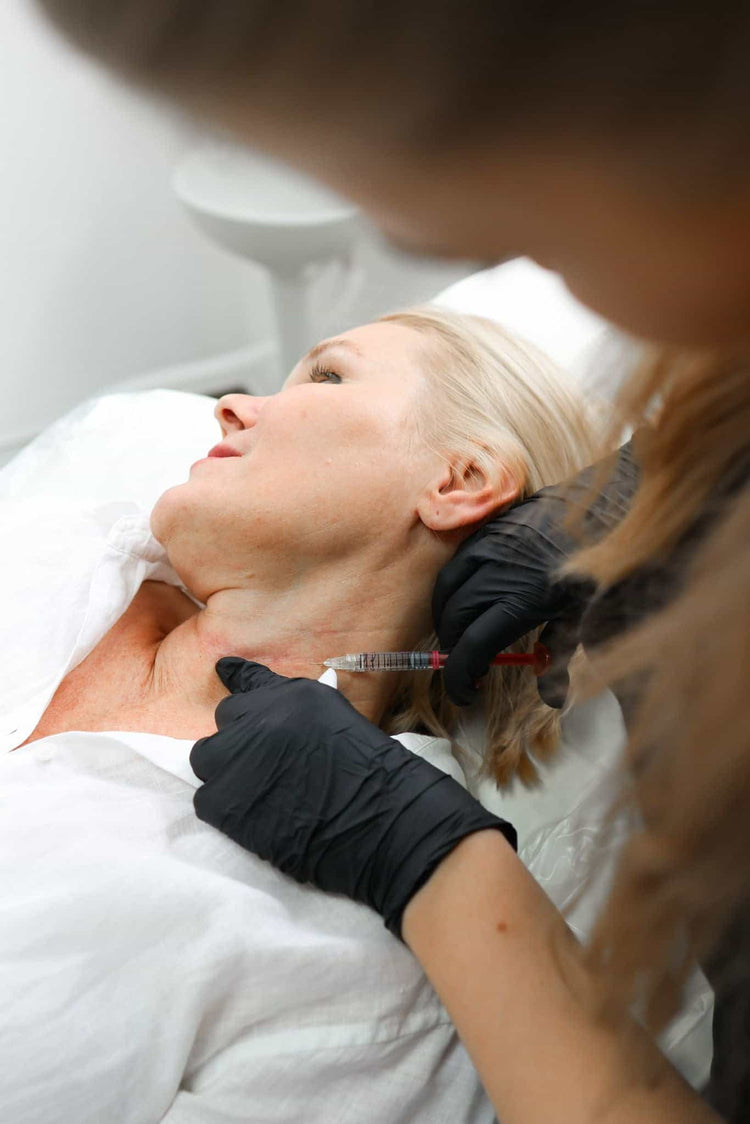
Like any cosmetic procedure, thread lifts come with potential risks and side effects. These can include bruising, swelling, redness, infection, and irregularities in the skin texture. It is crucial to consult with a board-certified plastic surgeon or dermatologist who has extensive experience with thread lifting techniques to minimize risks and maximize desired outcomes.
Types of Thread Lifts Used for Midface Rejuvenation
Recognizing the signs of midface volume loss is essential for addressing it effectively. Common symptoms include hollowed cheeks, nasolabial folds (lines from the nose to the corners of the mouth) that appear deeper or more pronounced, a flattened cheekbone area, a noticeable change in facial symmetry, and a tired or aged appearance.
Fortunately, advancements in aesthetic medicine offer a range of effective treatment options to restore volume and rejuvenate the midface.
Dermal fillers are a popular and versatile treatment for restoring volume loss in the midface. These injectables are made from hyaluronic acid, a naturally occurring substance in the body that helps to hydrate and plump up the skin. A skilled practitioner can strategically inject dermal fillers into specific areas of the midface to enhance cheekbones, smooth nasolabial folds, and create a more youthful contour.
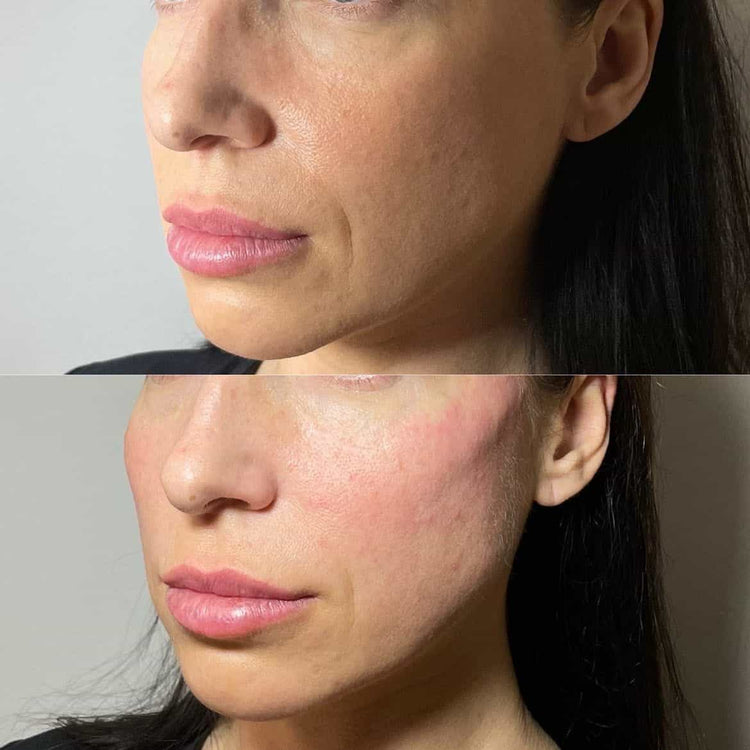
Hyaluronic acid fillers are the most common type used for midface augmentation. Popular brands include Restylane, Juvederm, and Belotero. Each filler has different properties, such as viscosity and longevity, allowing practitioners to tailor their choice to individual patient needs and desired outcomes. Other types of fillers, such as calcium hydroxylapatite, can also be used for midface volumization.
The procedure for dermal filler injection is relatively straightforward. It typically begins with a consultation to discuss your goals and medical history. The practitioner will then cleanse the treatment area and may use topical anesthetic to minimize discomfort. Using a fine needle or cannula, the dermal filler is injected into specific points in the midface. The practitioner will carefully manipulate the filler to achieve the desired results, such as lifting the cheeks, smoothing nasolabial folds, or enhancing the jawline.
The entire procedure usually takes about 30 minutes to an hour, depending on the extent of treatment required. After the injection, you may experience some mild swelling, bruising, or redness, which typically subside within a few days.
Dermal fillers offer numerous benefits for midface volume restoration. They provide immediate results, requiring no downtime for recovery. The procedure is relatively quick and minimally invasive, making it a convenient option for many patients. Furthermore, hyaluronic acid fillers are biodegradable and gradually absorbed by the body, allowing for natural-looking, long-lasting results that typically last 6 to 18 months.
Like any medical procedure, dermal fillers carry certain risks and potential side effects. These can include infection, bruising, swelling, redness, and asymmetry. It’s essential to choose a qualified and experienced practitioner who understands the nuances of facial anatomy and filler placement to minimize these risks. In rare cases, more serious complications such as vascular occlusion (blockage of a blood vessel) can occur. Discussing your medical history, any allergies you have, and medications you are taking with your practitioner before the procedure is crucial to ensure safe and effective treatment.
Fat grafting, also known as autologous fat transfer, is another effective option for midface volume restoration. This technique involves harvesting fat from a donor site, typically the abdomen, thighs, or buttocks, and then injecting it into the desired areas of the midface to restore fullness.
The advantage of fat grafting is that it utilizes the patient’s own tissue, minimizing the risk of allergic reactions or rejection. Additionally, fat can stimulate collagen production in the treated area, potentially leading to long-lasting improvements in skin quality and volume.
The fat grafting procedure typically involves two stages. First, a small amount of fat is removed from the donor site using liposuction techniques. This fat is then processed and purified to remove any unwanted cells or debris. Second, the purified fat is carefully injected into the midface using specialized cannulas.
A skilled surgeon will precisely place the fat to create a natural-looking enhancement of cheekbones, reduce nasolabial folds, and restore youthful contours.
Recovery from fat grafting generally involves some swelling, bruising, and tenderness around both the donor site and the injection areas. Most patients can resume normal activities within a few days, although it may take several weeks for the final results to become apparent as the transplanted fat settles into its new location.
Like any surgical procedure, fat grafting carries potential risks and complications, which should be thoroughly discussed with your surgeon before undergoing the treatment. These can include infection, asymmetry, contour irregularities, and the need for additional procedures to refine the results.
Fat grafting offers several benefits for midface volume restoration. As it utilizes the patient’s own fat, it minimizes the risk of allergic reactions or rejection, a concern that can arise with synthetic fillers. Furthermore, injected fat can stimulate collagen production, potentially leading to long-lasting improvements in skin quality and volume beyond just immediate fullness.
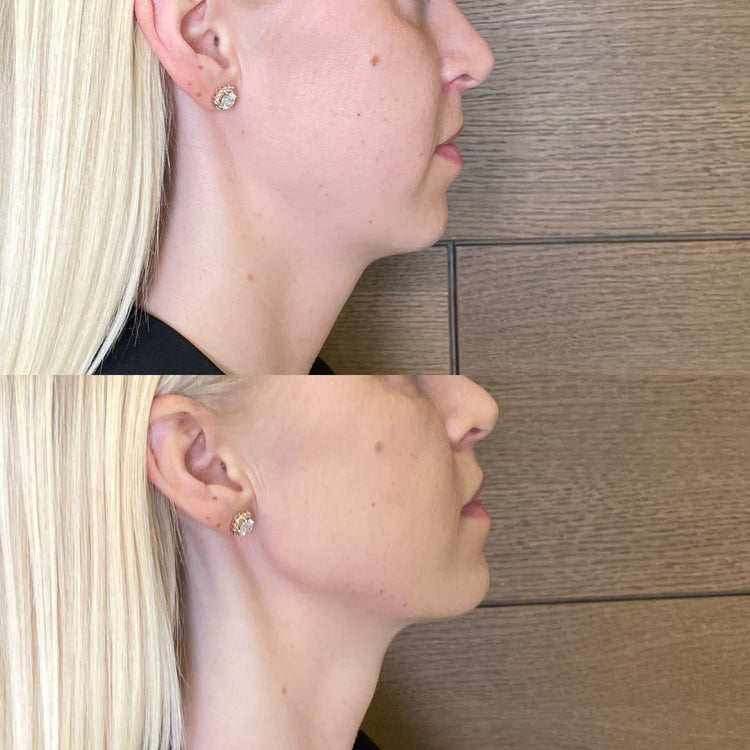
However, fat grafting also comes with potential risks and considerations:
- Fat Absorption: Not all transplanted fat survives. The body may reabsorb some of the injected fat over time, meaning multiple procedures might be needed to achieve desired results.
- Contour Irregularities: Uneven fat distribution can lead to noticeable lumps or dimples. Careful placement by a skilled surgeon is crucial to minimize this risk.
- Infection and Swelling: Like any surgical procedure, there’s a risk of infection at the donor site and/or injection sites. Swelling is also common after the procedure and can take several weeks to subside completely.
- General Anesthesia: Fat grafting often requires general anesthesia, which carries inherent risks associated with any anesthetic procedure.
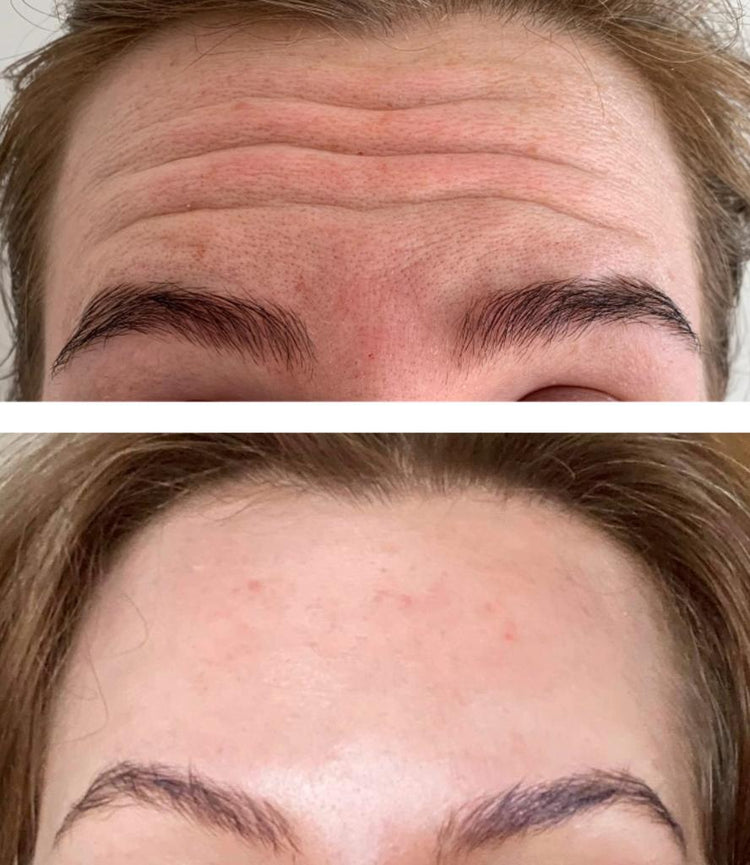
Thread lifting offers another approach to rejuvenating the midface by providing a more structural support system.
Unlike fillers that primarily add volume, threads are made of biodegradable materials like polydioxanone (PDO) and are strategically inserted into the skin. They create a lifting effect by stimulating collagen production and anchoring the skin.
Different thread types exist, each with specific applications:
- Absorbable barbed threads provide immediate lift due to their barbs that grip the tissue and pull it upward.
- Smooth threads work by stimulating collagen production over time, leading to a gradual lifting effect and skin tightening.
A qualified practitioner will assess your individual needs and choose the most suitable thread type for desired outcomes.
Thread lift procedures are generally less invasive than surgical facelifts, often performed under local anesthesia with sedation. The procedure involves making small incisions and inserting the threads into the designated areas of the midface.
The practitioner then maneuvers the threads to achieve a lifting effect and secure them in place.
While thread lifts provide noticeable results, it’s important to note that they are not permanent solutions. The duration of results depends on factors like the type of threads used, individual skin elasticity, and lifestyle choices.
Absorbable threads typically dissolve within a few months to a year, but the collagen stimulation they trigger can continue to provide lift for up to 18 months or longer.
Like any cosmetic procedure, thread lifts come with potential risks and side effects. These can include bruising, swelling, redness, infection, and irregularities in the skin texture. It is crucial to consult with a board-certified plastic surgeon or dermatologist who has extensive experience with thread lifting techniques to minimize risks and maximize desired outcomes.
Procedure for Thread Lift
The procedure for a thread lift involves several steps:
- Consultation: A qualified practitioner will assess your facial structure, skin condition, and desired goals.
- Preparation:** The treatment area is cleansed and sterilized. Local anesthesia may be administered to minimize discomfort.
- Thread Insertion:** Using a fine needle or cannula, the threads are carefully inserted into strategic points in the midface, following precise pathways determined by the practitioner.
- Thread Manipulation: The threads are then maneuvered and adjusted to achieve the desired lifting effect. Barbed threads grip the tissue, while smooth threads stimulate collagen production over time.
- Securement:** The ends of the threads are secured in place, either by knotting them or using special fasteners provided with the thread type.
- Aftercare: The practitioner will provide post-treatment instructions to minimize swelling and promote healing.
Recovery from a thread lift is generally quick and comfortable. Most patients can resume normal activities within a few days, although it may take a few weeks for the final results to become fully apparent. Some mild bruising or swelling is common and typically subsides within 7-14 days.
It’s important to note that thread lifts are not permanent solutions. The duration of results varies depending on factors like the type of threads used, individual skin elasticity, and lifestyle choices. Absorbable threads typically dissolve within a few months to a year, but the collagen stimulation they trigger can continue to provide lift for up to 18 months or longer.
Choosing an experienced and qualified practitioner is crucial for achieving optimal results and minimizing risks associated with thread lifting.
Benefits and Risks of Thread Lifting
Several factors contribute to midface volume loss: Gravity, fat redistribution, bone loss, and decreased collagen production all play a role.
Recognizing the signs of midface volume loss is essential for addressing it effectively. Common symptoms include:
- Hollowed cheeks
- Nasolabial folds (lines from the nose to the corners of the mouth) that appear deeper or more pronounced
- A flattened cheekbone area
- A noticeable change in facial symmetry
- A tired or aged appearance
Fortunately, advancements in aesthetic medicine offer a range of effective treatment options to restore volume and rejuvenate the midface.
Dermal fillers are a popular and versatile treatment for restoring volume loss in the midface. These injectables are made from hyaluronic acid, a naturally occurring substance in the body that helps to hydrate and plump up the skin. A skilled practitioner can strategically inject dermal fillers into specific areas of the midface to enhance cheekbones, smooth nasolabial folds, and create a more youthful contour.
Hyaluronic acid fillers are the most common type used for midface augmentation. Popular brands include Restylane, Juvederm, and Belotero. Each filler has different properties, such as viscosity and longevity, allowing practitioners to tailor their choice to individual patient needs and desired outcomes. Other types of fillers, such as calcium hydroxylapatite, can also be used for midface volumization.
The procedure for dermal filler injection is relatively straightforward. It typically begins with a consultation to discuss your goals and medical history. The practitioner will then cleanse the treatment area and may use topical anesthetic to minimize discomfort. Using a fine needle or cannula, the dermal filler is injected into specific points in the midface. The practitioner will carefully manipulate the filler to achieve the desired results, such as lifting the cheeks, smoothing nasolabial folds, or enhancing the jawline.
The entire procedure usually takes about 30 minutes to an hour, depending on the extent of treatment required. After the injection, you may experience some mild swelling, bruising, or redness, which typically subside within a few days.
Dermal fillers offer numerous benefits for midface volume restoration. They provide immediate results, requiring no downtime for recovery. The procedure is relatively quick and minimally invasive, making it a convenient option for many patients. Furthermore, hyaluronic acid fillers are biodegradable and gradually absorbed by the body, allowing for natural-looking, long-lasting results that typically last 6 to 18 months.
Like any medical procedure, dermal fillers carry certain risks and potential side effects. These can include infection, bruising, swelling, redness, and asymmetry. It’s essential to choose a qualified and experienced practitioner who understands the nuances of facial anatomy and filler placement to minimize these risks. In rare cases, more serious complications such as vascular occlusion (blockage of a blood vessel) can occur. Discussing your medical history, any allergies you have, and medications you are taking with your practitioner before the procedure is crucial to ensure safe and effective treatment.
Fat grafting, also known as autologous fat transfer, is another effective option for midface volume restoration. This technique involves harvesting fat from a donor site, typically the abdomen, thighs, or buttocks, and then injecting it into the desired areas of the midface to restore fullness.
The advantage of fat grafting is that it utilizes the patient’s own tissue, minimizing the risk of allergic reactions or rejection. Additionally, fat can stimulate collagen production in the treated area, potentially leading to long-lasting improvements in skin quality and volume.
The fat grafting procedure typically involves two stages. First, a small amount of fat is removed from the donor site using liposuction techniques. This fat is then processed and purified to remove any unwanted cells or debris. Second, the purified fat is carefully injected into the midface using specialized cannulas.
A skilled surgeon will precisely place the fat to create a natural-looking enhancement of cheekbones, reduce nasolabial folds, and restore youthful contours.
Recovery from fat grafting generally involves some swelling, bruising, and tenderness around both the donor site and the injection areas. Most patients can resume normal activities within a few days, although it may take several weeks for the final results to become apparent as the transplanted fat settles into its new location.
Like any surgical procedure, fat grafting carries potential risks and complications, which should be thoroughly discussed with your surgeon before undergoing the treatment. These can include infection, asymmetry, contour irregularities, and the need for additional procedures to refine the results.
Fat grafting offers several benefits for midface volume restoration. As it utilizes the patient’s own fat, it minimizes the risk of allergic reactions or rejection, a concern that can arise with synthetic fillers. Furthermore, injected fat can stimulate collagen production, potentially leading to long-lasting improvements in skin quality and volume beyond just immediate fullness.
However, fat grafting also comes with potential risks and considerations:
- Fat Absorption: Not all transplanted fat survives. The body may reabsorb some of the injected fat over time, meaning multiple procedures might be needed to achieve desired results.
- Contour Irregularities: Uneven fat distribution can lead to noticeable lumps or dimples. Careful placement by a skilled surgeon is crucial to minimize this risk.
- Infection and Swelling: Like any surgical procedure, there’s a risk of infection at the donor site and/or injection sites. Swelling is also common after the procedure and can take several weeks to subside completely.
- General Anesthesia: Fat grafting often requires general anesthesia, which carries inherent risks associated with any anesthetic procedure.
Thread lifting offers another approach to rejuvenating the midface by providing a more structural support system.
Unlike fillers that primarily add volume, threads are made of biodegradable materials like polydioxanone (PDO) and are strategically inserted into the skin. They create a lifting effect by stimulating collagen production and anchoring the skin.
Different thread types exist, each with specific applications:
- Absorbable barbed threads provide immediate lift due to their barbs that grip the tissue and pull it upward.
- Smooth threads work by stimulating collagen production over time, leading to a gradual lifting effect and skin tightening.
A qualified practitioner will assess your individual needs and choose the most suitable thread type for desired outcomes.
Thread lift procedures are generally less invasive than surgical facelifts, often performed under local anesthesia with sedation. The procedure involves making small incisions and inserting the threads into the designated areas of the midface.
The practitioner then maneuvers the threads to achieve a lifting effect and secure them in place.
While thread lifts provide noticeable results, it’s important to note that they are not permanent solutions. The duration of results depends on factors like the type of threads used, individual skin elasticity, and lifestyle choices.
Absorbable threads typically dissolve within a few months to a year, but the collagen stimulation they trigger can continue to provide lift for up to 18 months or longer.
Like any cosmetic procedure, thread lifts come with potential risks and side effects. These can include bruising, swelling, redness, infection, and irregularities in the skin texture. It is crucial to consult with a board-certified plastic surgeon or dermatologist who has extensive experience with thread lifting techniques to minimize risks and maximize desired outcomes.
Choosing the Right Treatment in Walton-on-Thames, Surrey
Choosing the right treatment for midface volume restoration in Walton-on-Thames, Surrey requires careful consideration of your individual needs and goals.
Midface volume loss is a natural part of aging, but it can be effectively addressed with various options available at cosmetic clinics in Walton-on-Thames.
Dermal fillers, fat grafting, and thread lifting are among the most popular methods for restoring youthful contours to the midface. Each technique has its own benefits, risks, and considerations, so consulting with a qualified practitioner is essential to determine the best approach for you.
Consultation with a Qualified Practitioner
Choosing the right treatment for midface volume restoration in Walton-on-Thames, Surrey requires careful consideration of your individual needs and goals.
Midface volume loss is a natural part of aging, but it can be effectively addressed with various options available at cosmetic clinics in Walton-on-Thames.
Dermal fillers, fat grafting, and thread lifting are among the most popular methods for restoring youthful contours to the midface. Each technique has its own benefits, risks, and considerations, so consulting with a qualified practitioner is essential to determine the best approach for you.
Factors to Consider When Choosing a Treatment
Choosing the right treatment for midface volume restoration in Walton-on-Thames, Surrey requires careful consideration of your individual needs and goals.
Here are some factors to keep in mind:
- Desired Results:** What specific improvements are you looking for? Do you want to enhance cheekbones, reduce nasolabial folds, or achieve a more overall youthful appearance?
- **Budget:** Treatment costs can vary significantly depending on the technique chosen.
- Downtime and Recovery:** Some treatments require more downtime than others. Consider your schedule and lifestyle when making your decision.
- Personal Preferences:** Discuss your concerns, expectations, and any preferences you may have with a qualified practitioner.
- **Medical History:** Certain medical conditions or medications may affect your suitability for particular treatments.
Consulting with a board-certified plastic surgeon or dermatologist experienced in midface rejuvenation is crucial to explore the best options tailored to your individual needs and desired outcomes. They can assess your facial structure, skin condition, and goals to recommend the most appropriate treatment plan.
Remember that every person’s anatomy and aesthetic goals are unique, so what works for one individual may not be suitable for another. A personalized consultation will ensure you make an informed decision about the best way to achieve your desired results.
Finding Reputable Clinics in Walton-on-Thames
Choosing a reputable clinic in Walton-on-Thames for midface volume restoration is essential for achieving safe and effective results. Look for clinics with experienced practitioners, positive patient reviews, and a commitment to using high-quality products and techniques.
Here are some tips for finding the right clinic:
* **Ask for Referrals:** Seek recommendations from friends, family, or your primary care physician.
* **Check Credentials:** Verify that the practitioners you’re considering are board-certified in their respective fields (plastic surgery, dermatology, etc.).
* **Read Online Reviews:** Websites like RealSelf and Google Reviews can provide insights into other patients’ experiences with a clinic.
* **Schedule Consultations:** Meet with several clinics to discuss your goals, ask questions about procedures, and get a feel for their approach and professionalism.
Pay attention to the following during consultations:
* **Practitioner’s Expertise:** Inquire about their experience specifically with midface rejuvenation treatments.
* **Treatment Options:** Ensure they offer a range of options to suit your needs and budget.
* **Facility Cleanliness and Safety:** A reputable clinic will prioritize hygiene and patient safety.
* **Communication Style:** Choose a practitioner who listens attentively, answers your questions thoroughly, and makes you feel comfortable.
Remember, investing time in finding the right clinic is crucial for achieving safe and satisfactory outcomes with your midface volume restoration treatment.
Recovery and Aftercare
Midface volume loss is a common concern as we age, leading to a less youthful appearance. Fortunately, advancements in cosmetic procedures offer effective solutions to restore fullness and definition to this important area of the face. This article explores various treatment options available in Walton-on-Thames, Surrey, for those seeking to rejuvenate their midface and regain a more radiant look.
Midface volume loss can manifest as hollow cheeks, accentuated nasolabial folds (the lines from the nose to the corners of the mouth), and a flattened cheekbone area. These changes contribute to an overall tired or aged appearance. Several factors contribute to this age-related decline, including gravity, fat redistribution, bone loss, and decreased collagen production.
Expected Recovery Time
Recovery time after midface volume restoration varies depending on the chosen procedure.
For dermal fillers, most patients experience minimal downtime, with some mild swelling or bruising that typically subsides within a few days.
You can usually resume normal activities immediately, although it’s best to avoid strenuous exercise and exposure to extreme temperatures for the first 24 hours.
Fat grafting may require slightly more downtime as it involves surgery. Expect some swelling and bruising around both the donor site and injection areas. While you might be able to return to work within a few days, more demanding activities could take a week or two to fully recover from.
Thread lifts generally have a shorter recovery period compared to fat grafting. You may experience mild swelling and tenderness for a few days, but most people can resume daily activities within a couple of weeks.
It’s important to follow your practitioner’s post-treatment instructions carefully to ensure optimal healing and minimize any potential complications.
Post-Treatment Instructions
Recovery time after midface volume restoration varies depending on the chosen procedure.
Dermal fillers typically require minimal downtime, with most patients experiencing only mild swelling or bruising that subsides within a few days. You can usually resume normal activities immediately, although it’s best to avoid strenuous exercise and exposure to extreme temperatures for the first 24 hours.
Fat grafting may involve a slightly longer recovery period as it’s a surgical procedure. Expect some swelling and bruising around both the donor site and injection areas. While you might be able to return to work within a few days, more demanding activities could take a week or two to fully recover from.
Thread lifts generally have a shorter recovery period compared to fat grafting. You may experience mild swelling and tenderness for a few days, but most people can resume daily activities within a couple of weeks.
It’s crucial to follow your practitioner’s post-treatment instructions carefully to ensure optimal healing and minimize any potential complications.
Schedule your lip enhancement appointment with Dr. Laura Geige at It’s Me & You Clinic
- Why Does Lip Filler Migrate Above Lip - November 7, 2025
- What Is The Best THC Liquid? - November 4, 2025
- What Are The Best CBD Gummies For Relaxation And Stress Relief? - November 2, 2025

